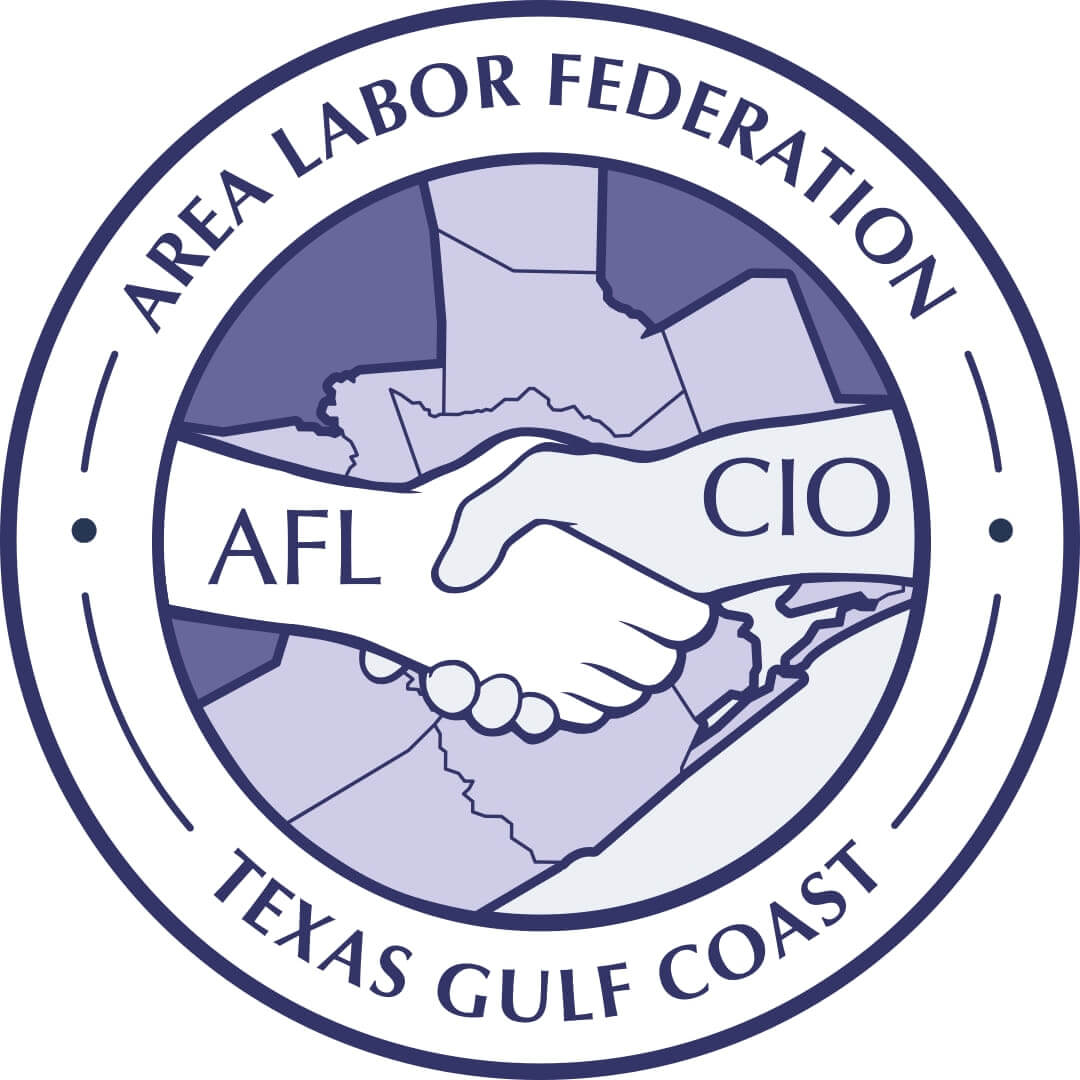Hampering worker power and unions in Texas is the “right to work” state framework imposed by conservative politicians and corporate donors.
This framework — while not directly banning unions — foments a “free choice” ideology that unions are somehow restrictive to worker’s rights while reducing union membership and resources. Texas also holds the dubious honor of being the only US state where worker’s compensation is not required. More than half a million workers had no coverage, with 81% covered on the state’s system and 13.5% on private insurance plans (according to a comprehensive 2014 investigation). What compensation system exists is stacked against workers, with more than 40% of claims (and often closer to 50%) disputed and only about 30% resulting in a win for injured workers. As such, worker’s compensation claims have dropped since 2007, even if injuries have not. Meanwhile, Texas persists in being the deadliest place for workers, year after year.
These combined realities have a tangible effect on the bodies and minds of workers, who face disproportionate rates of death and disability caused by their worksites. Texas has ranked number one in workplace deaths in the U.S. for many years, with construction a main driver of this tragedy. Living Hope Wheelchair Association is the only source of support for mostly undocumented workers whose injuries take them out of the workforce altogether, organizing for immediate medical equipment and healthcare access and for the rights of and collective civic voice for people with disabilities.

Unions
Compounding the challenges workers face is the lack of unionization that in many other US regions shaped improvement in workplace construction conditions. In construction, organizers noted that Texas construction is denied higher wages, protective gear, health care, and other benefits unionized workers receive in the Northern (and Western) US. Of course, a lack of union representation is a wider issue in Houston, where density is 4.0% (and Texas-wide 6.0%). Other leading employment sectors remain vastly unorganized, most prominently the healthcare sector. The region is a hub for global medical tourism and care. It was not until 2008 that nurses in one Houston hospital became the first ever in the state to join National Nurses United.
The union difference is clear in the sparse sectors where workers have been able to achieve union rights. Houston’s other big industries include food preparation and service, which employ 8.1% of workers. The United Food and Commercial Workers (UFCW) Local 455 represents some 14,000 grocery workers, who were hit hard by COVID-19. More than 500 workers at Kroger were diagnosed from December 2020 to February 2021, in the midst of continual organizing for hazard pay, vaccine priority, better health care, and control over pensions.
Even with the entrenched challenges, Houston is also the epicenter of a steady uptick in unionization in Texas. With the presence of the port in a globalized, logistics-driven era, transportation is central to jobs, composing 8.9% employment. Teamsters have organized to expand their membership by nearly a quarter in the last year. Relatedly, hospitality workers at the Houston International airport have also been active as part of UNITE HERE, which most recently has fought hard to protect workers from rounds of COVID-19 layoffs (by airlines like United who raked in federal funds) that have hit low-wage workers of color hardest.
Organizations like Workers Defense Project, the Texas Gulf Coast Area Labor Federation (TGCALF), AFL-CIO, Gulf Coast Building and Construction Trades Council and a dedicated coalition of organizations have stood at the front lines of restructuring the always-growing, but ever-dangerous construction fields. They have sought diverse ways to hold companies accountable, including pressuring public institutions who are driving new construction to provide living wages and protections. They have also passed ordinances to ensure public contracts adhere to certain wage and protections, especially following the post-disaster recovery.
The approach of Houston’s labor and worker organizations like TGCALF and WDP reflects an important mix of envisioning big-picture sectoral strategies with a focus on shifting specific, local geographic conditions and power dynamics.
These include efforts like WDP’s Better Builder Program, which target large developers to make comprehensive wage, training and hiring commitments, monitored through third parties and the cross-cutting Build Houston Better campaign.
Workers and communities face an uphill challenge getting companies to live up to the local worker protections that do exist or to the promises made via community benefits and other agreements. One leader explained, “Government agencies really don't seem to care about the policies that they've enacted so often times it discourages workers from pursuing claims against their employers.” Another noted “The process [of making claims] is lengthy so overall workers just lose hope, and say, I may never claim back wages, things will never get resolved…workers go through a lot of harassment too when they're going through this process.” This squeeze on workers can create fear of collective action, forcing employees to embrace an attitude of not wanting to “cause a commotion” or “you should be grateful, you just have work.” Much of the workforce is undocumented, and increased anti-immigrant xenophobia from the state government also worsens the fear of enforcement.

Living Hope Wheelchair Association
View website
Workers Defense Project
View website
Texas Gulf Coast Area Labor Federation
View website
IUPAT District Council 88
View website
National Domestic Workers Alliance
View website
Texas AFL-CIO
View websiteGovernment agencies really don't seem to care about the policies that they've enacted so often times it discourages workers from pursuing claims against their employers.”

Across these industries, widening wage gaps persists, and directly contribute to inequalities in poverty.
While overall 71% of workers earn $15 an hour in 2017, less than 53% of Latinxs or 61% of BIPOC workers earn this much (compared to 84% of white workers). This adds up to radical differences in poverty: as of 2017, 22% of Latinx residents live below 100% of the poverty line, as do 18% of Black residents, 9% of AAPI residents and 7% of white residents. For Latinx workers this represents an increase in the poverty level since 1980 and 1990, and an overall trend deepening inequality. (It’s important to note API data is not disaggregated, and does not show difference among AAPI communities). Overall, as Texas’s “miracle” has progressed, wage earnings for those in the lowest 10th and 20th percentiles saw wages decline by 25% for the former and 23% for the latter since 1980 (13% and 12% since 1990). Meanwhile, the highest 90th percentile saw their wages grow 23% since 1980 and 22% since 1990.
Job types
According to Bureau of Labor Statistics data from May 2020, more than 13.8% of Houston’s regional jobs were concentrated in office and administrative (i.e. back office) support. 5.9% of workers were employed in construction, and 4.4% in related maintenance and repair, well above the national averages. Employment, on the other hand, in engineering, architecture, and business operations were lower than the national average, suggesting much of the more well-paying aspects connected to back office and construction are performed elsewhere. Neither of these leading sectors are unionized, though construction, hospitality, aviation, janitors, and public employment are sites of much labor activism.
Construction
While employing an estimated 1 in 13 Houstonians, construction is as much a source of jobs as it is a tremendous driver of the inequality described in #1. It’s also one of the sectors where Houston’s land, corporate, and labor crises converge – driving the “miracle.” Workers are necessary to support Houston’s continual housing and commercial real estate boom. An army of building trades – skilled plumbers, electricians, painters, laborers, and more – make up nearly 20% of overall jobs. As one organizer pointed out, it doesn't take long for one to see “the disparities and a need for unions in the construction arena with such low wages, blatant safety violations and more inequalities ingrained into the culture of the construction world.” Yet the companies who benefit are shielded from responsibility through subcontracting chains and protection by government deals and lack of regulation.
Comprehensive construction research by Workers Defense Project shows a statewide industry where the majority of workers are paid poverty-level wages. Nearly a quarter (22%) of construction workers are regularly denied payment for their work, i.e. wage theft; 50% are denied owed overtime, 41% are wrongly classified as independent contractors, and 78% have no health insurance. This has tremendous social consequences, not the least of which is forcing state social services, public health and hospitals, and other providers to absorb the costs of enforced poverty, workplace injuries, and other inequity
Shaping the Future Workforce, Today
Among the industries where union power is expanding– and worker power is helping shift conditions for both employees and communities – is education. With K-12 teachers and assistants representing a large part of the workforce, the Houston Federation of Teachers (AFT) has been a leader in conversations on equity in schooling, as well as regarding public services. In Fall 2020, when Houston’s Independent School District re-opened quickly (only to immediately close 16 schools for confirmed COVID-19 cases), teachers staged a “sick-out” to demand smaller class sizes as well as mask requirements, improved ventilation, and other safety measures.
The AFT has also been a vocal advocate at the state level, where it has faced a hostile terrain; the 2021 legislative cycle alone included attempts by the Texas Education Agency (TEA) to impose its authority and a highly-controversial ban on critical race studies in grade school social science, including banning the use of The New York Times’ 1619 Project or even giving extra credit for political activism or policy internships. At the same time, teachers also readied to strike and put pressure statewide to win a 2019 pay increase — one that has since been protected by the legislature.
